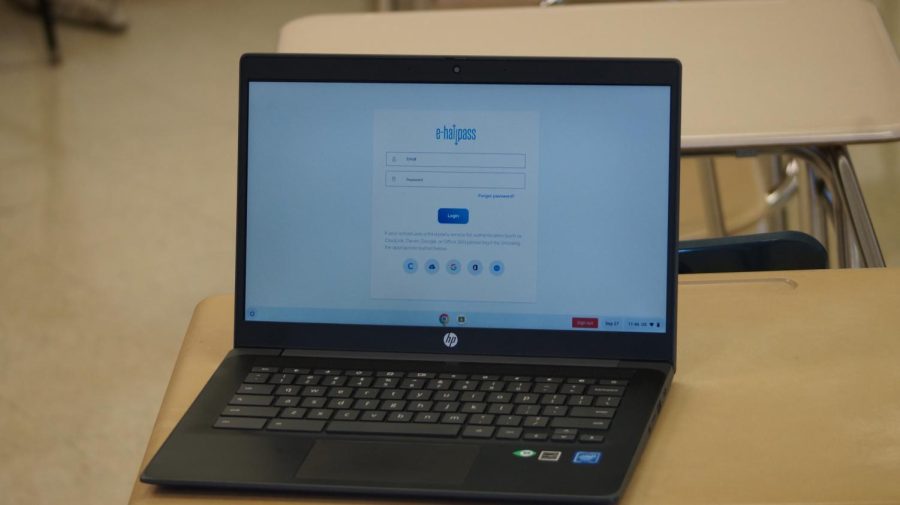E-hallpass: Where is it now?
It’s the question that’s been on all of our minds, what happened to e-hallpass? Students who were at Rolla High School last year vividly remember the school’s decision to adopt e-hallpass as the primary hall pass system, replacing the paper passes we currently use.
“As a teacher…I don’t think [e-hallpass will] ever come back,” said history teacher Sean Fleming. “From what I understand, [it was] just a logistical nightmare for administrators.”
Student reviews of e-hallpass are mixed. Those who complained found the system to be inconvenient and a hassle. While these voices might rise to the top of the hallway chatter, assistant principal Dr. Stephanie Grisham clarified that the decision to leave e-hallpass behind for this school year was more complex than its unpopularity among students.
“This year, we chose not to do e-hallpass for multiple reasons. Probably the main reason is that it wasn’t implemented with fidelity across the board… We were trying to figure out, does that outweigh the benefits that we were getting from a hall pass, and we couldn’t say ‘yes’ to that. So in the idea of also saving some money…We decided not to do e-hallpass,” said Grisham.
On the other hand, nurse Candice Hawks said it was very helpful for her. She highlighted a lot of the benefits of e-hallpass. Hawks has struggled in the past with an overflow of students in her office. She sees an average of 60 students a day, and e-hallpass helped her better manage that.
“I think where [e-hallpass] came in the most handy was the office limit. So, I set my office to three students max. So, if a student tried to make a pass and my office was full, it wouldn’t let them…I found this year without having the E-pass, I am constantly having to tell kids ‘hey, I’m at my limit. You’re gonna have to come back,’” said Hawks.
Hawks also described how e-hallpass helped her to schedule medications for new students.
“At the beginning of the year, you always have a new set of students…that you could make appointment passes for, and it usually takes two or three weeks before the kids get in a repetition of not needing an appointment pass and can remember to come [on their own],” said Hawks.
In an office setting, e-hallpass allowed staff to better manage student traffic, but what about in the classroom? While it varies by teacher, Fleming had the unique perspective of being at both the junior high and the high school.
“As a teacher, e-hallpass was very efficient. I liked it because the students were responsible. It took something off my plate…” said Fleming.
While e-hallpass had its advantages and disadvantages, the question is will e-hallpass ever come back to RHS?
According to Grisham, the administration is “not against bringing something back,” but that decision will be made “in subsequent years.”

Salut! I’m Lucas and this is my first year on ECHO staff. I’m currently a Junior, and I’m in Band and Tennis. I like music, photography, and camping....
Hello! My name is Catence. I’m a junior and this is my third year in ECHO. I am the webmaster, meaning I run everything related to our website. I am...







